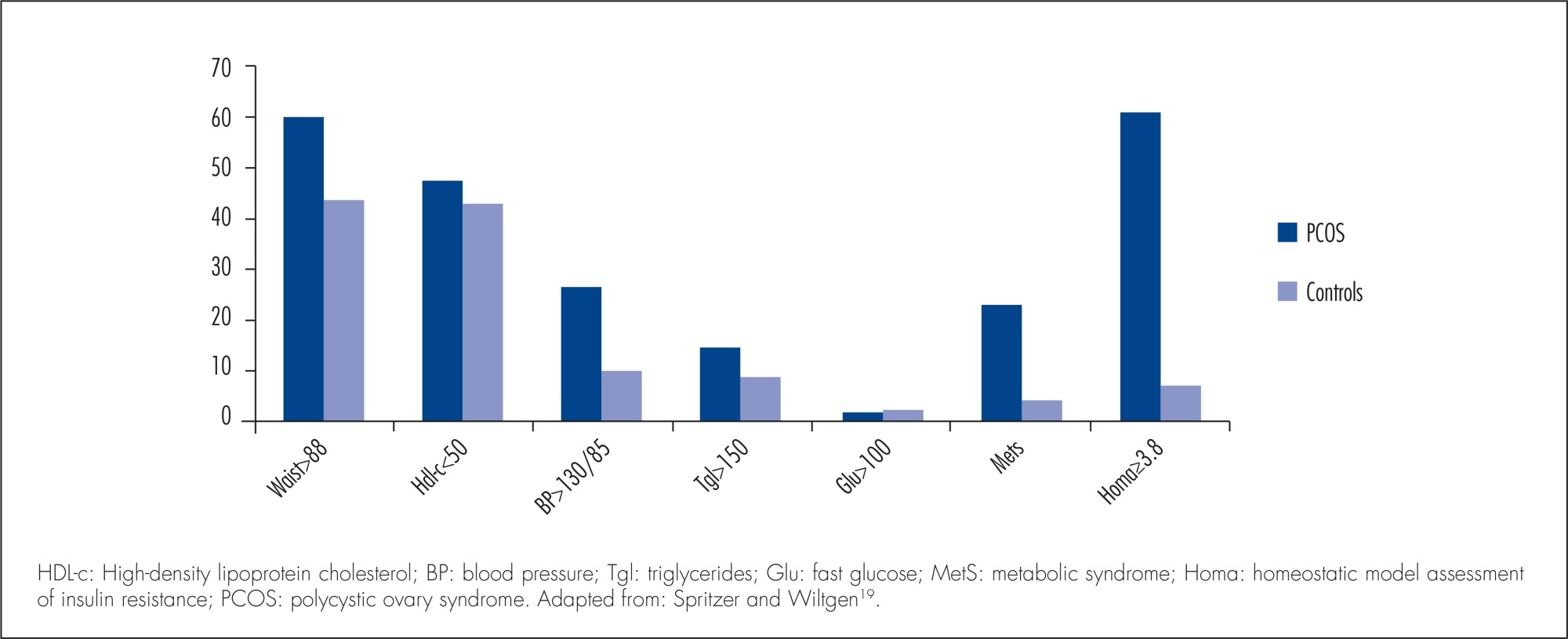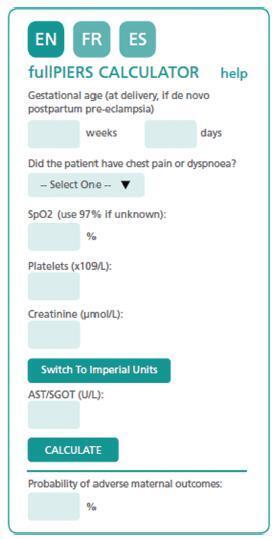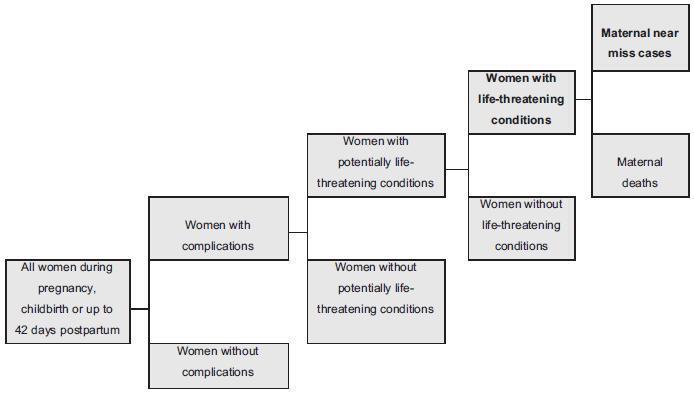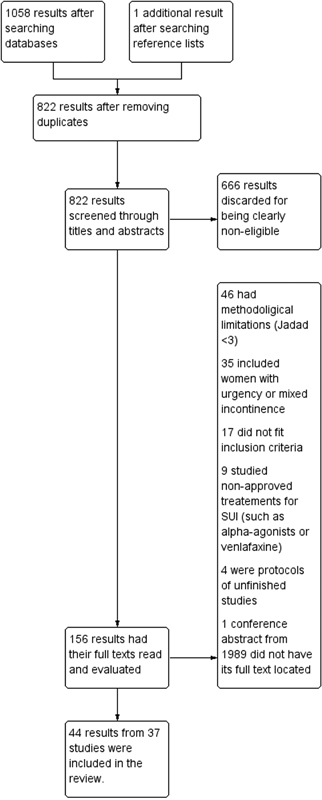-
Original Article04-10-1998
Obstetrical management of fetal death
Revista Brasileira de Ginecologia e Obstetrícia. 1998;20(3):145-149
Abstract
Original ArticleObstetrical management of fetal death
Revista Brasileira de Ginecologia e Obstetrícia. 1998;20(3):145-149
DOI 10.1590/S0100-72031998000300004
Views221See moreAlthough 80 to 90% of all dead fetuses may be spontaneously eliminated after two to three weeks from death, labor induction has been the mostly used management. The purpose of the current study was to evaluate the results of labor induction for pregnancies with fetal death and gestation age above 20 weeks. It was a descriptive clinical study which was performed at the Hospital e Maternidade Leonor Mendes de Barros in São Paulo, Brazil. One hundred and twenty-two pregnancies with fetal death were evaluated regarding their social and demographic characteristics, causes of fetal death, previous pregnancies history and delivery (induction, route, complications). The statistical procedures used were estimation of mean and standard deviation and chi². The main causes of fetal death were hypertension and infections. The mostly used drug for labor induction was misoprostol (37.7%) followed by oxytocin (19.7%), while 27% of cases had spontaneous onset of labor. The mean time of induction was 3 hours. The majority of women had vaginal delivery and cesarean section was performed in 9.1% of them. It is concluded that labor induction for fetal death is safe and efficient, irrespective of the method used. Misoprostol when used in the vagina is specially useful for cases with an unripe cervix because of the modifying effect of the drug on the cervix.
PlumX Metrics
- Citations
- Citation Indexes: 1
- Usage
- Full Text Views: 47102
- Abstract Views: 2040
- Captures
- Readers: 5
-
Original Article04-10-1998
Intrauterine transfusion in fetuses affected by severe perinatal hemolytic disease: a descriptive study
Revista Brasileira de Ginecologia e Obstetrícia. 1998;20(3):137-144
Abstract
Original ArticleIntrauterine transfusion in fetuses affected by severe perinatal hemolytic disease: a descriptive study
Revista Brasileira de Ginecologia e Obstetrícia. 1998;20(3):137-144
DOI 10.1590/S0100-72031998000300003
Views135See moreObjective: to report 54 intrauterine intravascular transfusions (IITs), describing procedure related complications and associated perinatal morbidity and mortality. Methods: fetuses undergoing IITs at Clínica Materno-Fetal and Maternidade Carmela Dutra, Florianópolis, SC, between January 1992 and August 1997 were included in the study. Patients demographics, procedure and newborn related data were tabulated for analysis and presented in descriptive form, using percentage, mean, standard deviation, median, range and relative risk (RR) with 95% confidence interval as appropriate. Results: fifty IITs and four exchange transfusions were performed in twenty-one fetuses. There were four deaths (20%), three of which occurred (75%) in hydropic fetuses. Mean gestational age at the time of the first IIT was 29.1 weeks, the mean hemoglobin concentration was 7.1 mg/dl and the mean rise in hemoglobin level per procedure was 5.69 mg/dl. Procedure related mortality rate was 7.4%. Mean gestational age at birth was 33.9 weeks and mean birth weight was 2,437 grams. Sixty-five percent of the newborns received complementary exchange transfusions. Conclusion: the procedure related mortality rate was 7.4%, similar to the mortality rate reported in the world literature. The perinatal mortality rate (20%) was higher than that reported in other countries but lower than the perinatal mortality rate reported in a study conducted in Brazil, with a similar prevalence of hydropic fetuses.
-
Original Article04-10-1998
Index for the systemic treatment of unruptured ectopic pregnancy with a single dose of methotrexate
Revista Brasileira de Ginecologia e Obstetrícia. 1998;20(3):127-135
Abstract
Original ArticleIndex for the systemic treatment of unruptured ectopic pregnancy with a single dose of methotrexate
Revista Brasileira de Ginecologia e Obstetrícia. 1998;20(3):127-135
DOI 10.1590/S0100-72031998000300002
Views107See moreA prospective study was performed with 42 patients with unruptured ectopic pregnancy, which intended to elaborate an index to orient the systemic treatment with the administration of a single intramuscular dose of methotrexate (50 mg/m²). Patients were monitored with beta-hCG titers on days 1, 4 and 7 after the methotrexate. When the titers of beta-hCG declined more than 15%, between days 4 and 7 after methotrexate, the patients were discharged and had an outpatient follow-up monitored with beta-hCG titers weekly until the titers were less than 5 mIU/ml, which represents success of the treatment. We prepared an index for the systemic treatment with methotrexate, with five parameters: (1) initial titers of beta-hCG; (2) aspects of the image at ultrasound (hematosalpinx, gestational sac, live embryo); (3) size of the mass; (4) free fluid in cul-de-sac; (5) collor doppler. Each parameter received a grade from 0 to 2. Grade 0 represented bad prognosis, favorable parameters received grade 2 and borderline parameters received grade one. The success rate with a single dose of methotrexate was 69.0% (29/42). The color doppler was performed in 20 of the 42 patients; in this group of 20 patients the success rate was 75.0% (15/20). In the 22 patients who were not submitted to the color doppler, the average grade of the score in the successful cases was 6.6, and in the unsuccessful it was 3.1. In the group who underwent the doppler (20 patients) the average was 7.9 in the successful cases and 4.2 in the cases that failed. In the present study the cut-off grade was 5, for most of the patients with grades above 5 had a successful treatment (15/16 – 93.75%), while grades equal or below 5 failed. The score will help to indicate the best cases for the medical treatment. We do not advise the treatment when the grade is equal or below 5. Therefore, we can predict a good evolution of the treatment when the grade is above five.
-
04-10-1998
A coordenação necessária
Revista Brasileira de Ginecologia e Obstetrícia. 1998;20(3):125-125
Abstract
A coordenação necessária
Revista Brasileira de Ginecologia e Obstetrícia. 1998;20(3):125-125
-
04-09-1998
Estudo do teste de angiotensina ii em gestantes hipertensas crônicas na predição da pré-eclâmpsia superajuntada
Revista Brasileira de Ginecologia e Obstetrícia. 1998;20(9):542-542
Abstract
Estudo do teste de angiotensina ii em gestantes hipertensas crônicas na predição da pré-eclâmpsia superajuntada
Revista Brasileira de Ginecologia e Obstetrícia. 1998;20(9):542-542
DOI 10.1590/S0100-72031998000900011
Views49Estudo do Teste de Angiotensina II em Gestantes Hipertensas Crônicas na Predição da Pré-Eclâmpsia Superajuntada. […]See more -
04-09-1998
Índice proteinúria/creatininúria em gestantes com hipertensão arterial sistêmica
Revista Brasileira de Ginecologia e Obstetrícia. 1998;20(9):542-542
Abstract
Índice proteinúria/creatininúria em gestantes com hipertensão arterial sistêmica
Revista Brasileira de Ginecologia e Obstetrícia. 1998;20(9):542-542
-
04-09-1998
Valor da histerossonografia na avaliação da cavidade endometrial na mulher com sangramento uterino anormal
Revista Brasileira de Ginecologia e Obstetrícia. 1998;20(9):541-542
Abstract
Valor da histerossonografia na avaliação da cavidade endometrial na mulher com sangramento uterino anormal
Revista Brasileira de Ginecologia e Obstetrícia. 1998;20(9):541-542
DOI 10.1590/S0100-72031998000900010
Views67Valor da Histerossonografia na Avaliação da Cavidade Endometrial na Mulher com Sangramento Uterino Anormal […]See more -
04-09-1998
Freqüência de mutação no códon 12 do gene K-ras no carcinoma ductal invasivo de mama, através da técnica da reação em cadeia da polimerase
Revista Brasileira de Ginecologia e Obstetrícia. 1998;20(9):541-541
Abstract
Freqüência de mutação no códon 12 do gene K-ras no carcinoma ductal invasivo de mama, através da técnica da reação em cadeia da polimerase
Revista Brasileira de Ginecologia e Obstetrícia. 1998;20(9):541-541
DOI 10.1590/S0100-72031998000900009
Views75Freqüência de Mutação no Códon 12 do Gene K-ras no Carcinoma Ductal Invasivo de Mama, Através da Técnica da Reação em Cadeia da Polimerase[…]See more
Search
Search in:
Tag Cloud
Pregnancy (252)Breast neoplasms (104)Pregnancy complications (104)Risk factors (103)Menopause (88)Ultrasonography (83)Cesarean section (78)Prenatal care (71)Endometriosis (70)Obesity (61)Infertility (57)Quality of life (55)prenatal diagnosis (51)Women's health (48)Maternal mortality (46)Postpartum period (46)Pregnant women (45)Breast (44)Prevalence (43)Uterine cervical neoplasms (43)







